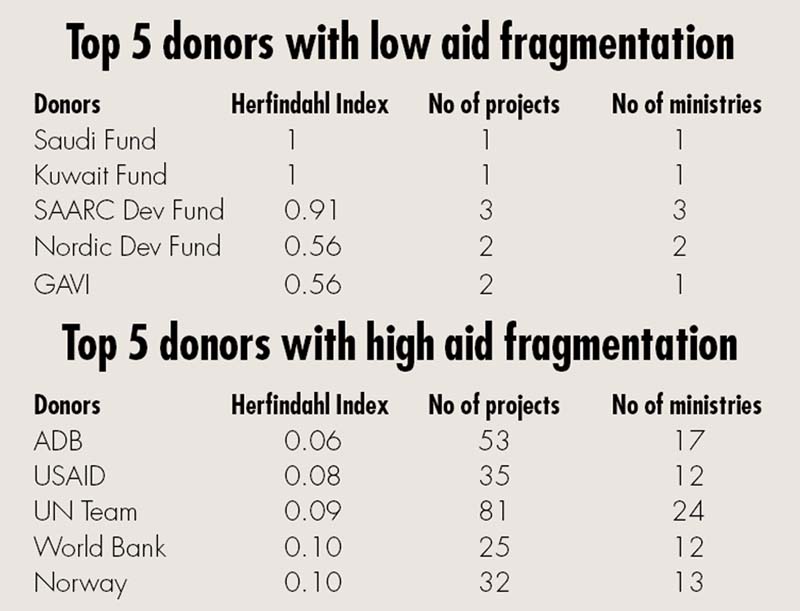Donors need to reduce areas of operation: MoF
Kathmandu, April 24
Each development partner operating in country worked with eight ministries or agencies on average in the last fiscal year, indicating fragmentation of aid money in a number of projects, which tends to erode aid effectiveness.
Although the number of ministries or agencies that development partners worked with in the fiscal year 2014-15 fell from nine in the previous fiscal year, the result is not encouraging, says the Development Cooperation Report made public today by the Ministry of Finance (MoF).
“Many development partners are still associated with over 10 counterpart ministries or agencies. This clearly shows development partners’ need to concentrate resources in selected sectors where they have comparative advantage,” adds the report, calling on donor agencies to reduce the areas of operation and focus on certain quality projects.
Aid fragmentation occurs when development partners scatter financial resources in many projects or programmes. The Organisation for Economic Cooperation and Development has defined fragmentation as ‘aid that comes in too many slices from too many donors, creating high transaction costs and making it difficult for partner countries to effectively manage their development’. Scattering of aid also raises transaction cost, which erodes effectiveness of projects.
The MoF has been using Herfindahl index to measure the level of fragmentation within a given portfolio. A score of 1 in the index indicates perfectly unfragmented portfolio, while zero represents high fragmentation.
Index shows funds extended by Asian Development Bank (ADB) are the most fragmented. Manila-based multilateral lending institution, which was third largest donor in last fiscal in terms of aid disbursement, received a score of 0.06 in aid fragmentation.
As it worked with 17 ministries to implement 53 projects, a large number of projects under ADB did not even receive five per cent of total disbursed amount, shows the report.
Another donor agency with high fragmented portfolio was the United States Agency for International Development, which received a score of 0.08. The USAID, which was the fourth largest donor in the last fiscal year, worked with 12 ministries to roll out 35 projects, the MoF report shows.
Next in the league table was United Nations Country Team, which received a score of 0.09. The UN team worked with 24 ministries to implement 81 projects in the last fiscal.
A toolkit prepared by the European Union has recommended a maximum of three sectors for each donor. However, the toolkit calls for some flexibility at the country level if sectors are narrow in scope.
“Given the level of aid fragmentation in Nepal, concentration of five sectors or less per donor agency can be considered as satisfactory,” the MoF report says.
Some of the sectors where donor involvement is high are: education, health, local development, drinking water and road transportation.






